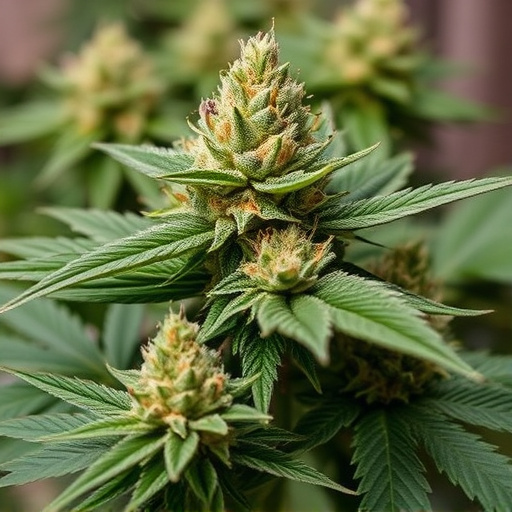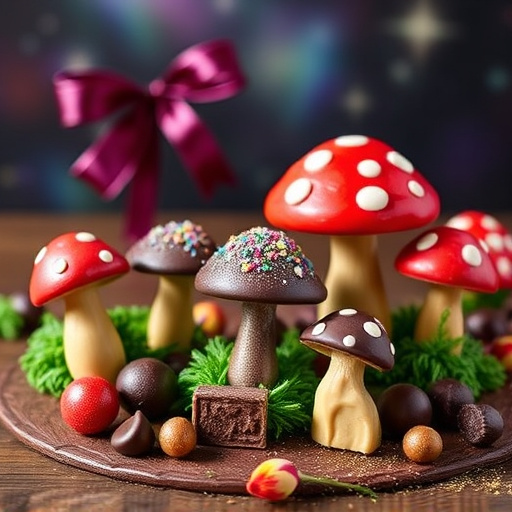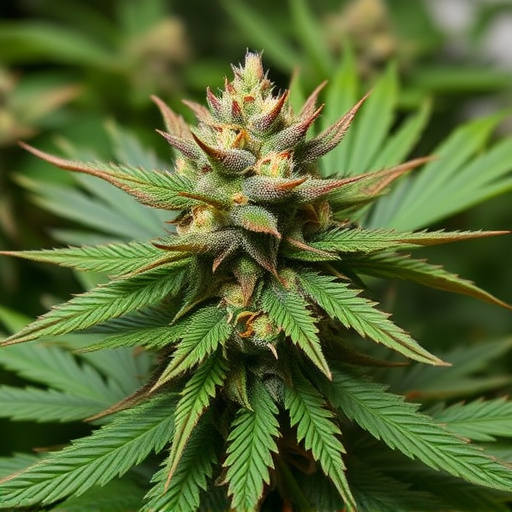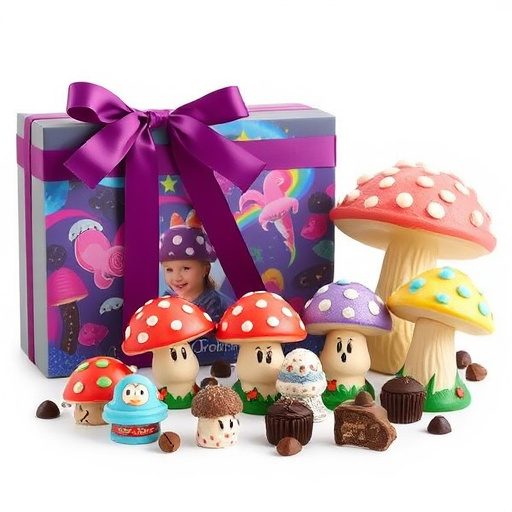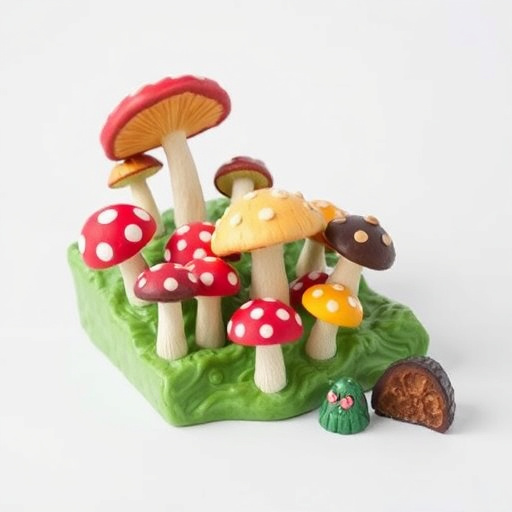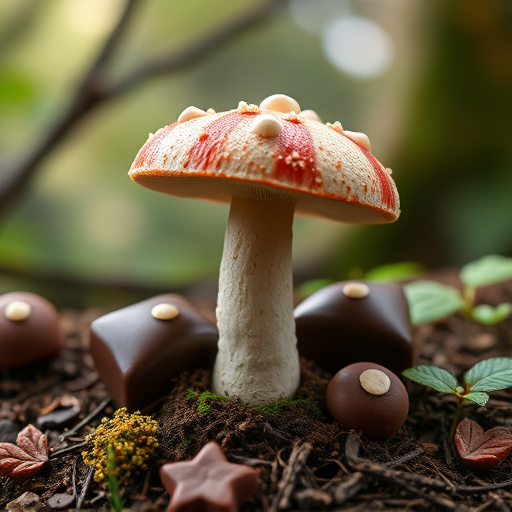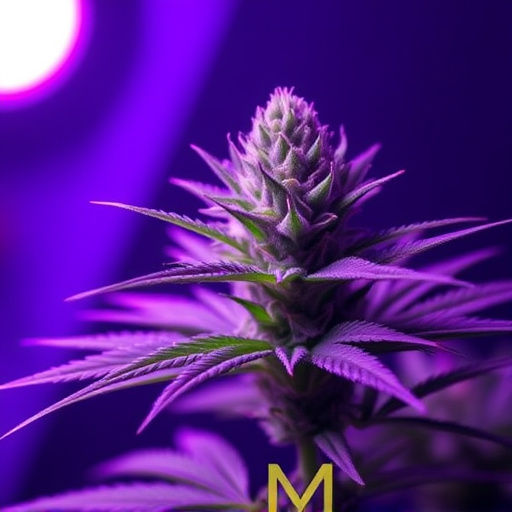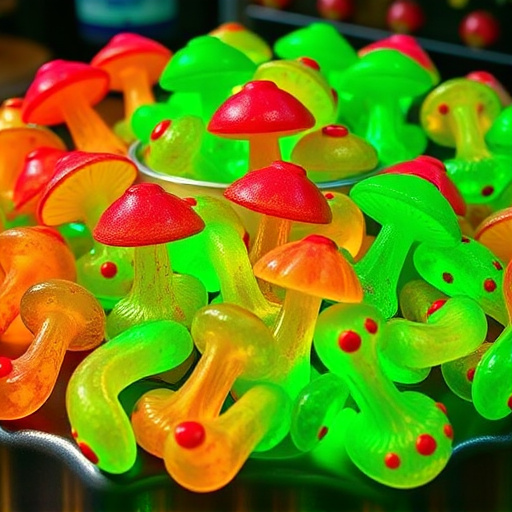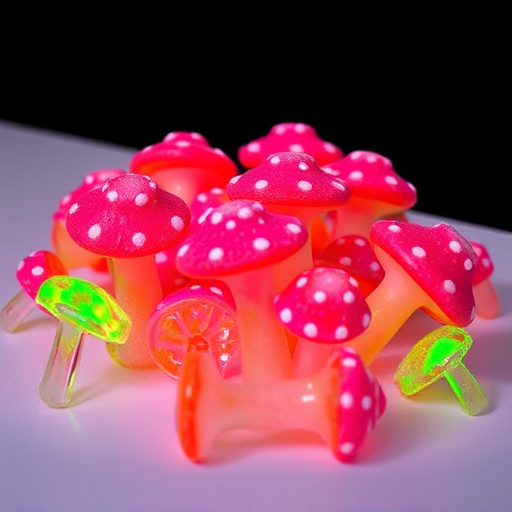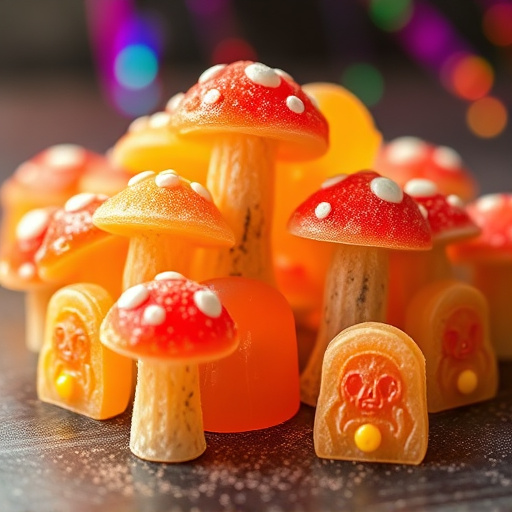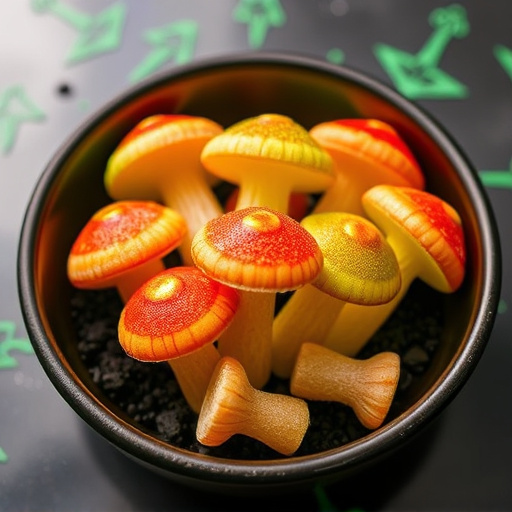The history of magic mushroom gummies usage spans centuries, with Indigenous cultures globally incorporating psychedelic mushrooms into rituals. The modern era began in the 1960s with psychedelic research and Timothy Leary advocating for their therapeutic benefits. Advancements in extraction methods led to the creation of edible gummies, offering a popular and accessible way to experience psilocybin today, driven by increasing mainstream acceptance of psychedelic therapy.
“Unraveling the Affordable Magic Mushrooms Gummies Phenomenon: A Journey Through Time and Trends
Magic mushroom gummies have transcended their mysterious origins to become a popular choice for modern consumers. This article delves into the fascinating history of these edible treats, tracing their evolution from underground subcultures to mainstream popularity. We explore how changes in legal landscapes have shaped their accessibility, with a particular focus on the rise of affordable packs. By examining health benefits and safety considerations, we navigate the present landscape while forecasting future trends in this burgeoning market.”
- A Brief History of Magic Mushroom Gummies
- – Exploring the origins and early usage of magic mushroom gummies.
- – When did they first appear on the scene? Who popularized them?
A Brief History of Magic Mushroom Gummies
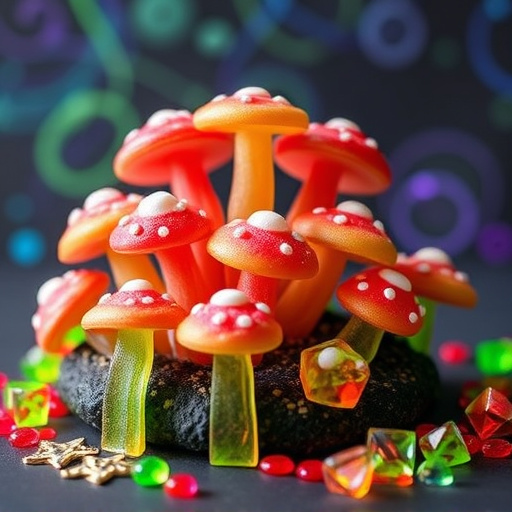
Magic mushroom gummies have gained popularity as a modern way to experience the effects of psilocybin, a compound found in certain types of mushrooms. However, their history stretches back centuries. Indigenous cultures around the world have long used magic mushrooms for both spiritual and medicinal purposes, incorporating them into rituals and traditional healing practices.
The modern era of magic mushroom gummies began with the growing interest in psychedelic research and therapeutic applications during the 1960s and 70s. As society’s perspective on mental health and substance use evolved, researchers started exploring psilocybin as a potential treatment for various conditions like depression, anxiety, and addiction. This renewed interest led to advancements in extraction methods, allowing for the creation of edible forms, such as gummies, which offer a more palatable and controlled way to consume psilocybin compared to traditional mushroom preparations.
– Exploring the origins and early usage of magic mushroom gummies.
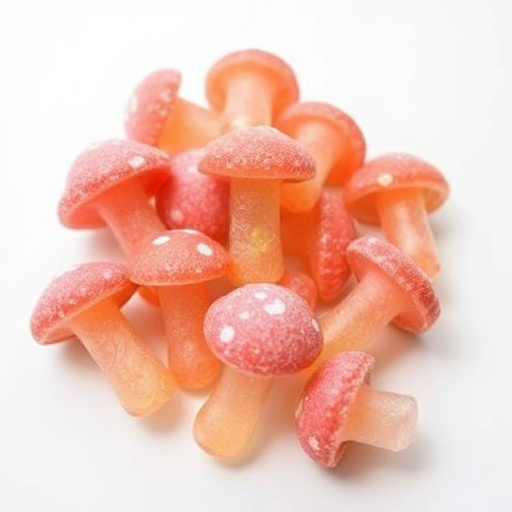
Magic mushroom gummies have evolved from their earthy, traditional roots to become a modern, sought-after treat—a far cry from their early beginnings. The history of using mushrooms in edible forms dates back centuries, with indigenous cultures utilizing various fungi for medicinal and ritual purposes. However, the specific concept of encapsulating psilocybin mushrooms in gummy form is relatively new. It emerged as an innovative way to consume these hallucinogenic substances, offering a more palatable and discreet alternative to traditional methods.
Early users of magic mushroom gummies were primarily interested in their psychological effects for spiritual exploration, artistic inspiration, and personal growth. As word spread about the potential therapeutic benefits and unique experiences, this once-niche product gained traction, especially within counterculture movements. Over time, with increasing mainstream acceptance of psychedelic therapy, the demand for accessible, legal ways to consume psilocybin has led to a booming market for magic mushroom gummies, making them an affordable and convenient option for those seeking alternative wellness solutions.
– When did they first appear on the scene? Who popularized them?
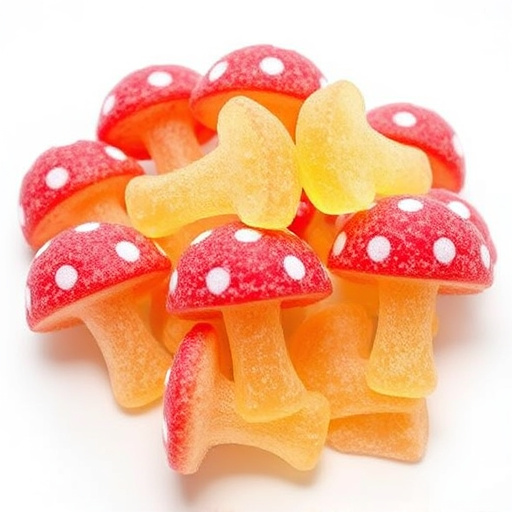
The history of magic mushroom gummies usage is intertwined with the broader cultural movement surrounding psychedelic substances and their therapeutic potential. While exact origins are difficult to pinpoint, early experimentation with edible mushrooms dates back centuries in various cultures, particularly in Asia and South America. However, modern interest in psilocybin-containing gummies as a recreational and therapeutic tool gained significant traction during the 1960s counterculture movement, when psychedelic drugs were embraced by a growing youth population seeking alternative experiences.
Figures like Timothy Leary played a pivotal role in popularizing psychedelic mushrooms and their derivatives among Western audiences. His advocacy for the therapeutic use of psilocybin sparked scientific interest and underground research during this era. As time progressed, the development of synthetic methods allowed for more consistent production of edible forms, including gummies, making them easily accessible and appealing as a way to experience the effects of magic mushrooms in a discreet and modern manner.
In summary, the history of magic mushroom gummies is a fascinating tale of evolving psychedelic culture. From their modest beginnings as experimental treats, these gummy packs have grown in popularity, offering an affordable and accessible way to explore the therapeutic potential of psilocybin. As the conversation around mental health and alternative treatments gains momentum, the demand for magical mushrooms in consumable forms like gummies is sure to continue rising, shaping a new era in the world of psychedelic usage.
